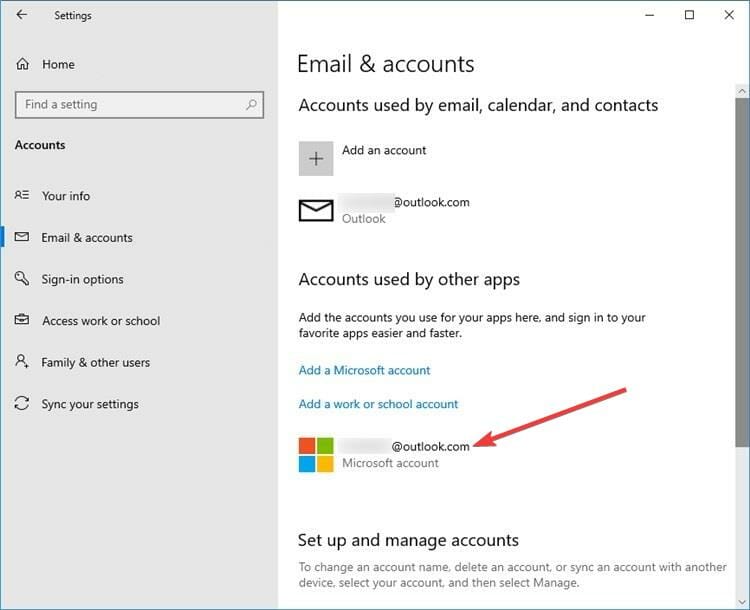

- EMAIL KEEPS ASKING FOR PASSWORD HOW TO
- EMAIL KEEPS ASKING FOR PASSWORD PASSWORD
- EMAIL KEEPS ASKING FOR PASSWORD OFFLINE
- EMAIL KEEPS ASKING FOR PASSWORD WINDOWS
HKEY_CURRENT_USER\Software\Microsoft\Office\12.0\Outlook\RPC\TransientFailureBackoff (DWORD) If we do receive an authentication error, attempts to acquire another set of credentials will fail for a timeout period set in this registry entry. You can use the following registry entry to set a timeout period. (default to FALSE, 1 is TRUE, and 0 is FALSE) HKEY_CURRENT_USER\Software\Microsoft\Office\12.0\Outlook\RPC\DisableTransientFailureAuthPrompts (DWORD) You can use the following registry entry to disable the credentials prompts when you receive an authentication error on credentials. Result: Prompts for user credentials and successfully connects to Microsoft Exchange. Additionally, if you mistype your password, it will continue to prompt you.Īdditional Steps: When you configure the profile, select Always prompt for username and password.

Additionally, it will continue to prompt you if you mistype your password. Remains in the disconnected state, occasionally trying to connect. Result: Does not prompt for user credentials, and will not connect to Microsoft Exchange. Result: Prompt for user credentials and connect to Microsoft Exchange. Protocol: TCP, HTTP with NTLM authorization Result: Connect to Microsoft Exchange without prompting for user credentials. Protocol: TCP, HTTP with NTML authorization UseWindowsUserCredentials: 0 (or not present) The following scenarios may help you determine the value that you want to use. Note When you set the UseWindowsUserCredentials value to 1, only the user's desktop credentials will be used. In the Value data box, type the value that you want to use, and then click OK. Right-click UseWindowsUserCredentials, and then click Modify. Type UseWindowsUserCredentials, and then press ENTER. Note If the RPC key does not exist, follow these steps:Īfter you select the key that is specified in step 3, point to New on the Edit menu, and then click HKEY_CURRENT_USER\Software\Microsoft\Office\12.0\Outlook\RPC Locate and then click to select the following registry key:
EMAIL KEEPS ASKING FOR PASSWORD PASSWORD
If you are prompted for an administrator password or for confirmation, type the password or provide confirmation.
EMAIL KEEPS ASKING FOR PASSWORD WINDOWS
In Windows Vista, click Start, type regedit in the Start Search box, and then press ENTER. To enable the hotfix, follow these steps:
EMAIL KEEPS ASKING FOR PASSWORD HOW TO
For more information about how to back up and restore the registry, click the following article number to view the article in the Microsoft Knowledge Base:ģ22756 How to back up and restore the registry in Windows Then, you can restore the registry if a problem occurs. For added protection, back up the registry before you modify it. Therefore, make sure that you follow these steps carefully. However, serious problems might occur if you modify the registry incorrectly. Important This section, method, or task contains steps that tell you how to modify the registry. For more information, click the following article number to view the article in the Microsoft Knowledge Base:ĩ57909 Description of the Outlook 2007 post-Service Pack 1 hotfix package: SeptemHow to enable the hotfix This issue is fixed in the Outlook 2007 hotfix package 957909.

Important Do not apply this hotfix if an account lockout policy has been applied.įor an overview of the account lockout policy, visit the following Microsoft TechNet Web site: In this case, you do not receive an error message or a notification, and you will not be connected to the mailbox.
EMAIL KEEPS ASKING FOR PASSWORD OFFLINE
If you do not enter a password or if you enter an incorrect password, Outlook 2007 may silently enter Offline mode.

Under certain network conditions, Microsoft Office Outlook 2007 prompts you repeatedly for a password. Outlook 2007 prompts you repeatedly for a password under certain network conditions Symptoms


 0 kommentar(er)
0 kommentar(er)
